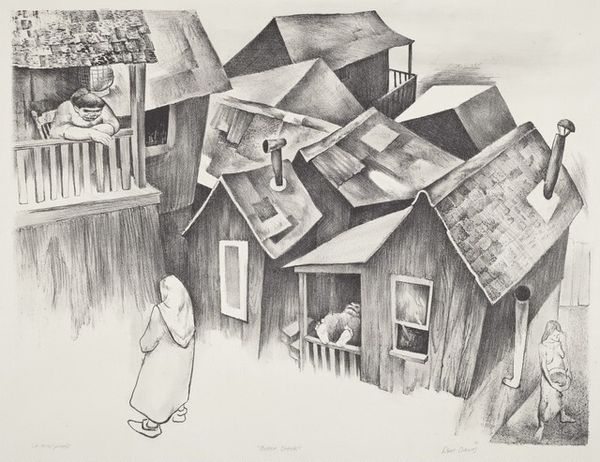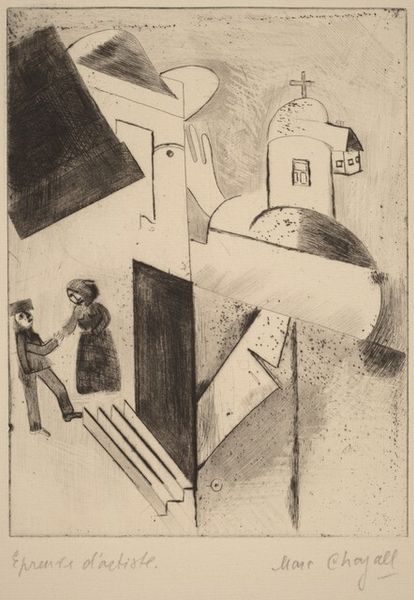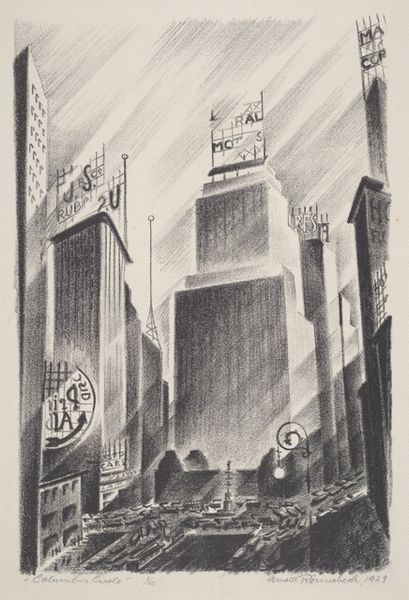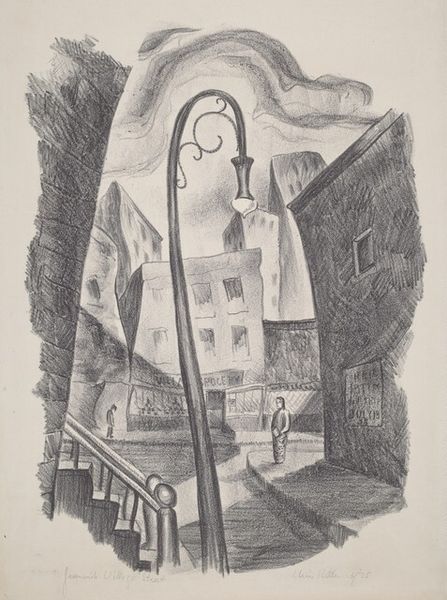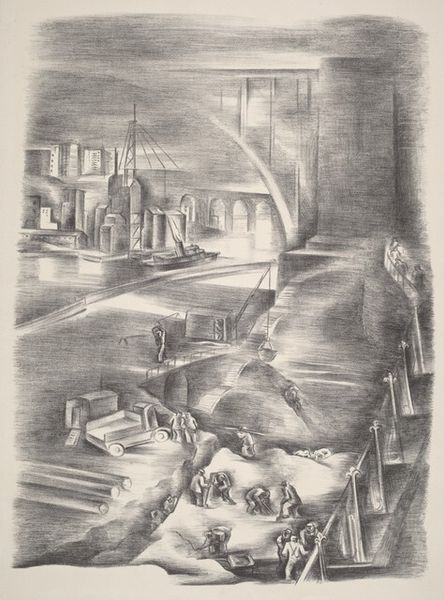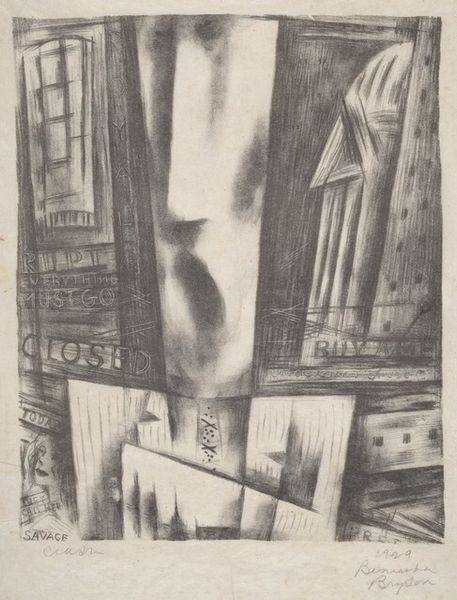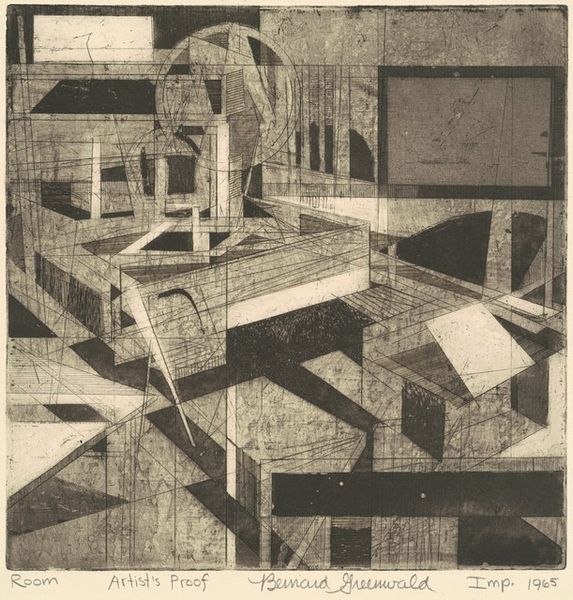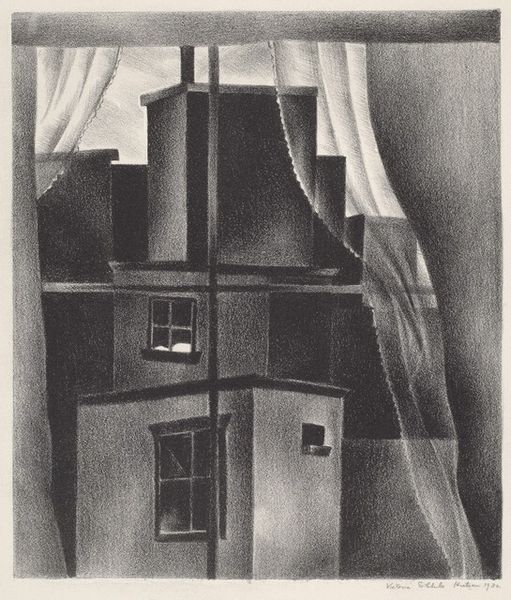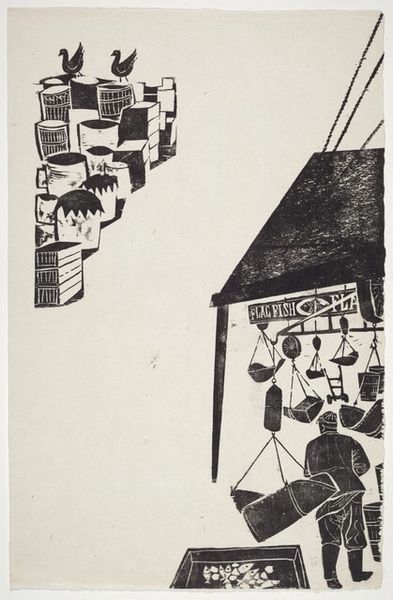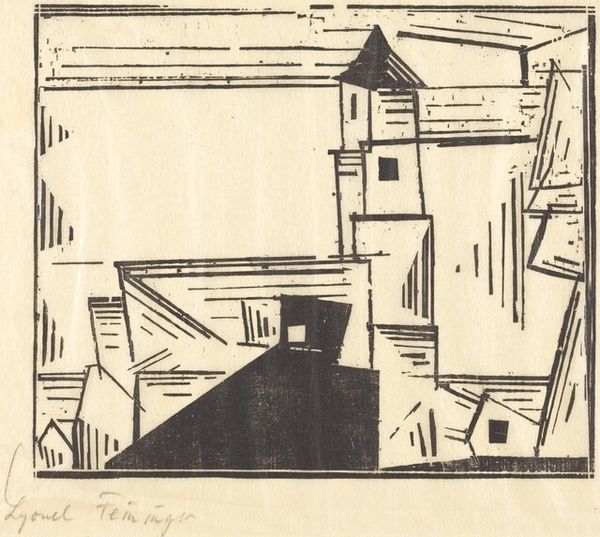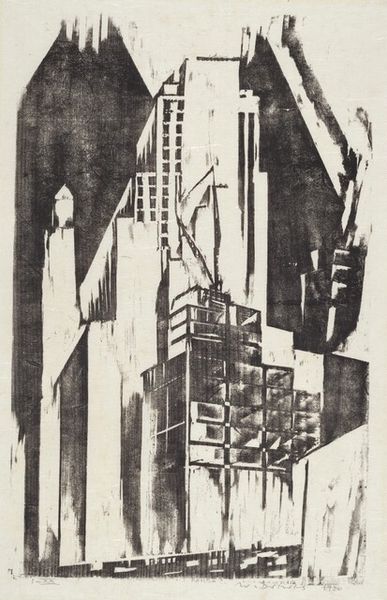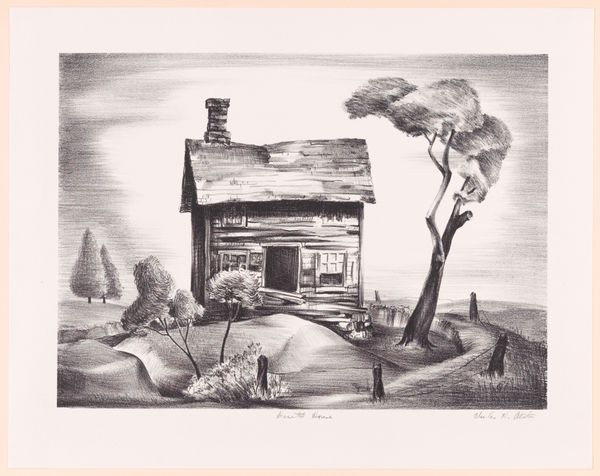
drawing, print, pencil
#
portrait
#
pencil drawn
#
drawing
# print
#
pencil sketch
#
figuration
#
pencil
#
cityscape
#
surrealism
Dimensions: Image: 290 x 215 mm Sheet: 385 x 290 mm
Copyright: National Gallery of Art: CC0 1.0
Curator: This intriguing piece is entitled "Eyes of the Night," created in 1951 by Karl Eugene Fortess, rendered in pencil on paper, subsequently produced as a print. Editor: My initial impression is one of stark isolation. The sharp lines and monochromatic palette contribute to a feeling of urban loneliness, a stage set for…what exactly, I can't quite say yet. Curator: Indeed. The work layers several representational modes. Note the depiction of buildings rendered almost as stage props atop what seems to be a brick wall bearing the number 5. There's a portrait incorporated within a framed artwork amidst a depiction of urban architecture; also what seems to be pictures propped into the surreal space itself. It challenges traditional divisions of representation. How does the act of creating and distributing prints shape the work's reception and meaning? Editor: That’s a crucial point. The printing process itself democratizes the image, enabling wider dissemination. Look at the layering of these fabricated spaces on what amounts to be the backdrop—how that shapes how we, the public, perceive these built environments, especially so soon after WWII when there were many discussions on rebuilding society. We're confronted with layers of constructed realities, reflecting perhaps post-war anxieties about identity and place. Curator: Absolutely. It speaks to the intersection of personal expression and societal construction. Consider the significance of pencil as a readily available, almost proletarian medium in the artist's practice, highlighting the accessibility and resourcefulness inherent in printmaking, challenging established notions of artistic value. It reflects art's public accessibility. Editor: A powerful reminder that art emerges not in a vacuum, but through tangible means accessible to artist. Even more, I think, what's visible in the print is how it implicates our experience. "Eyes of the Night," Fortess gestures towards our very public encounter with art, both questioning its making and how our vision constitutes public spaces. Curator: Thank you. Considering Fortess’ materials and distribution method in “Eyes of the Night” helps clarify the political implications behind even solitary, dreamlike depictions of modern life. Editor: I agree. And by acknowledging those elements, we allow "Eyes of the Night" to do more than present an artwork--it challenges our own acts of vision.
Comments
No comments
Be the first to comment and join the conversation on the ultimate creative platform.
